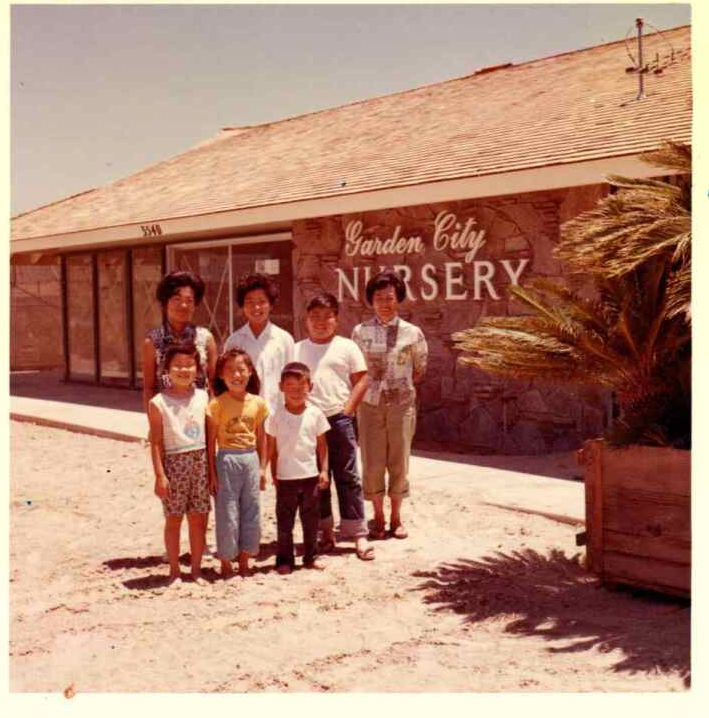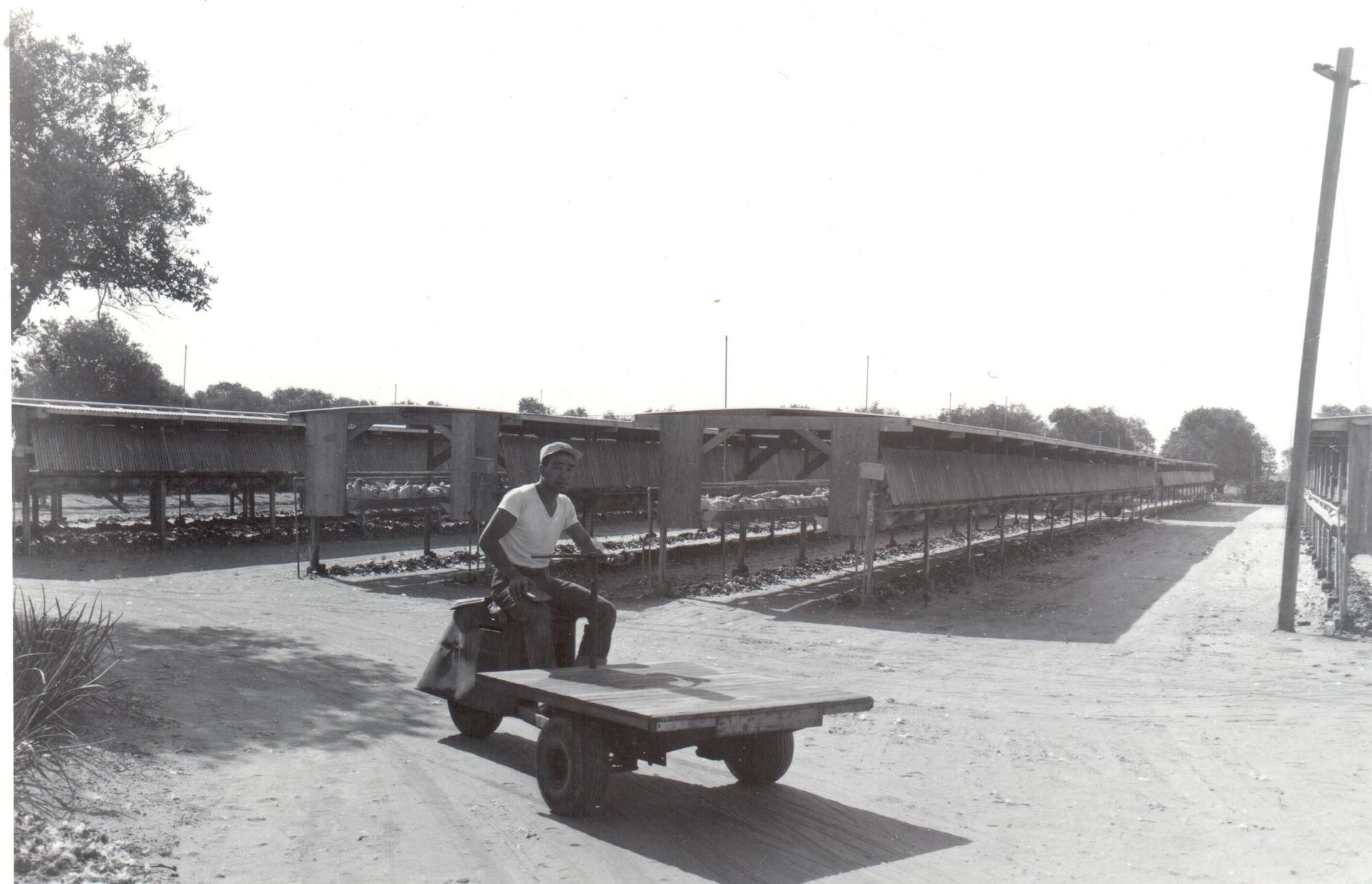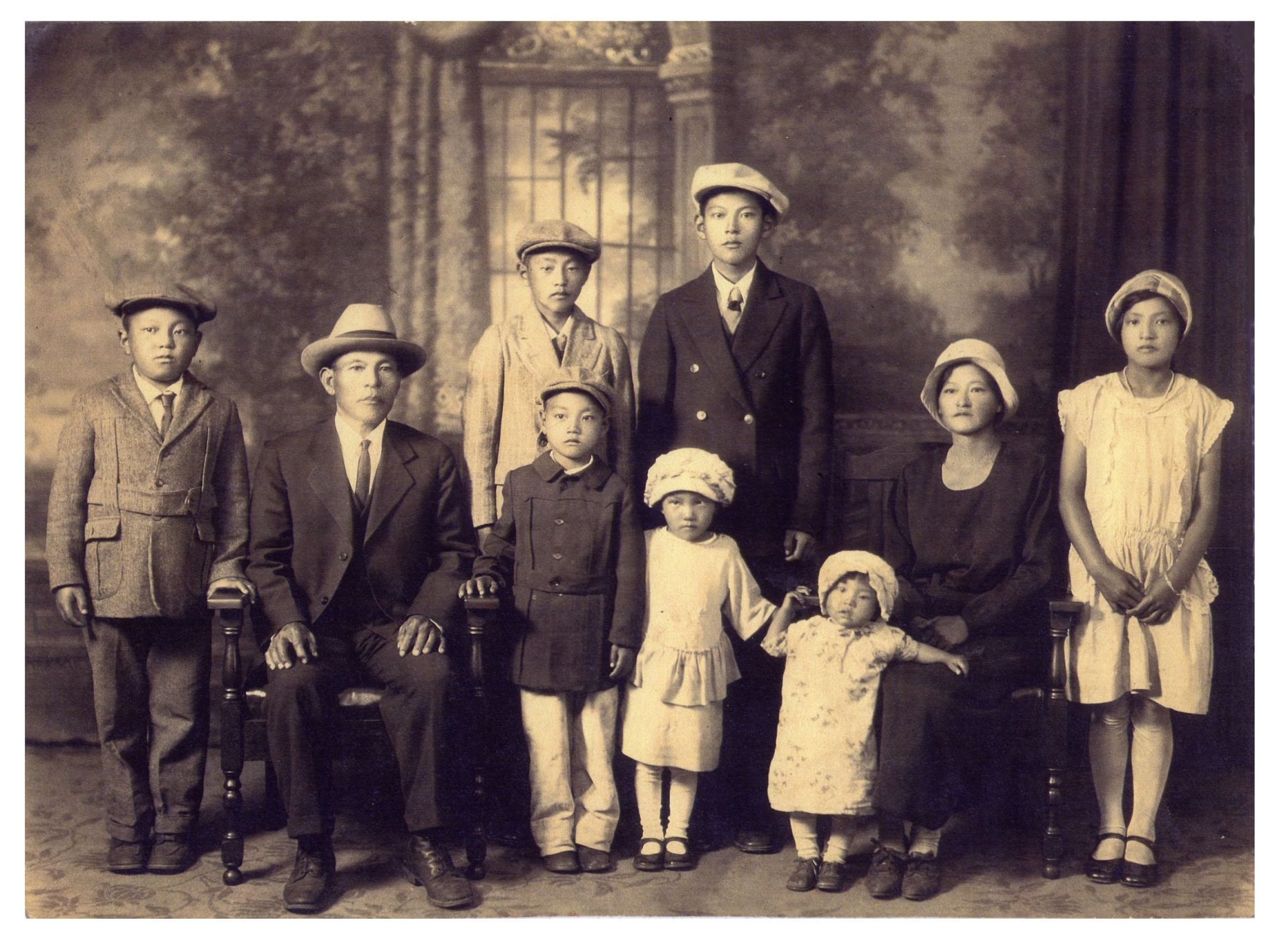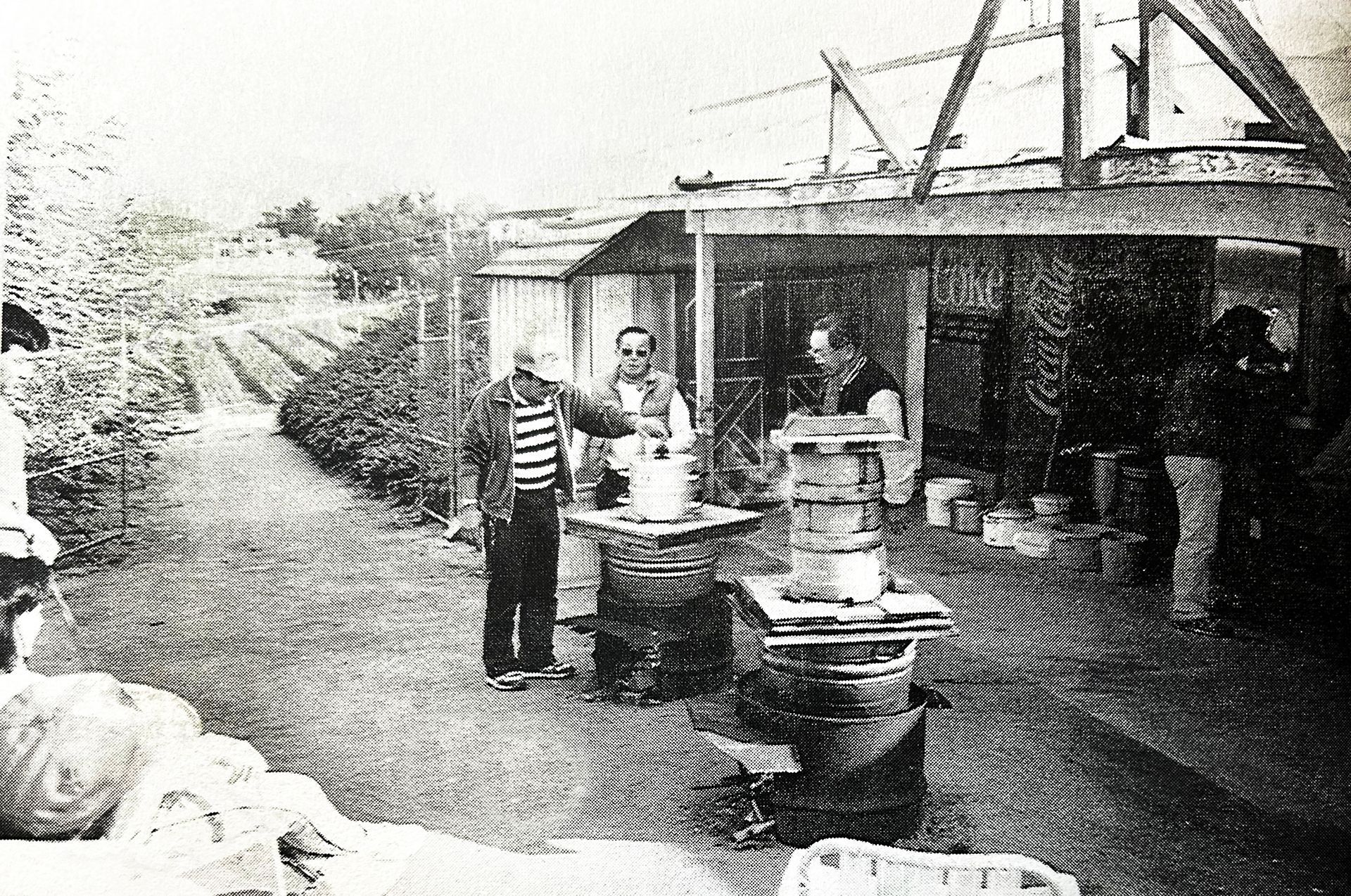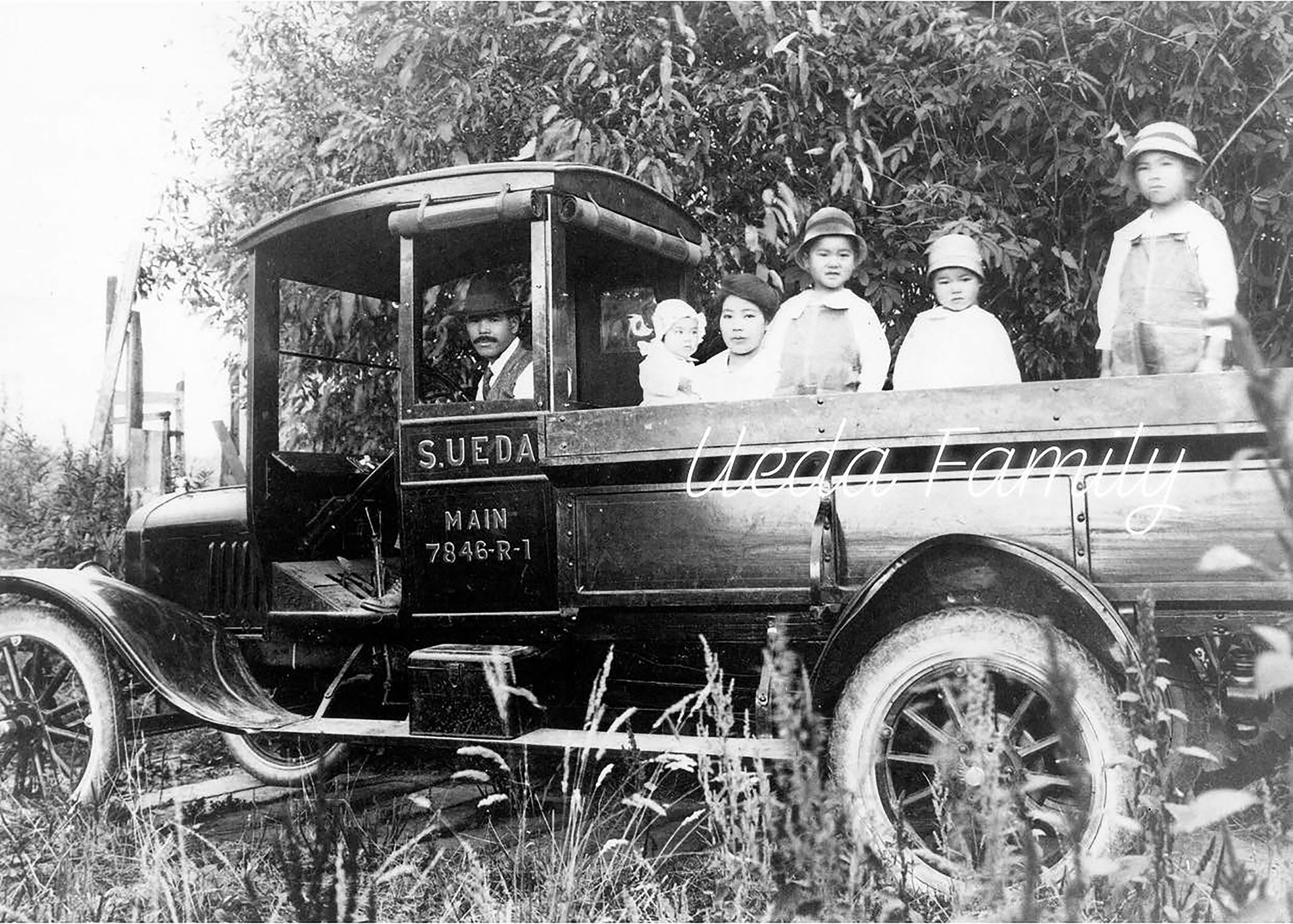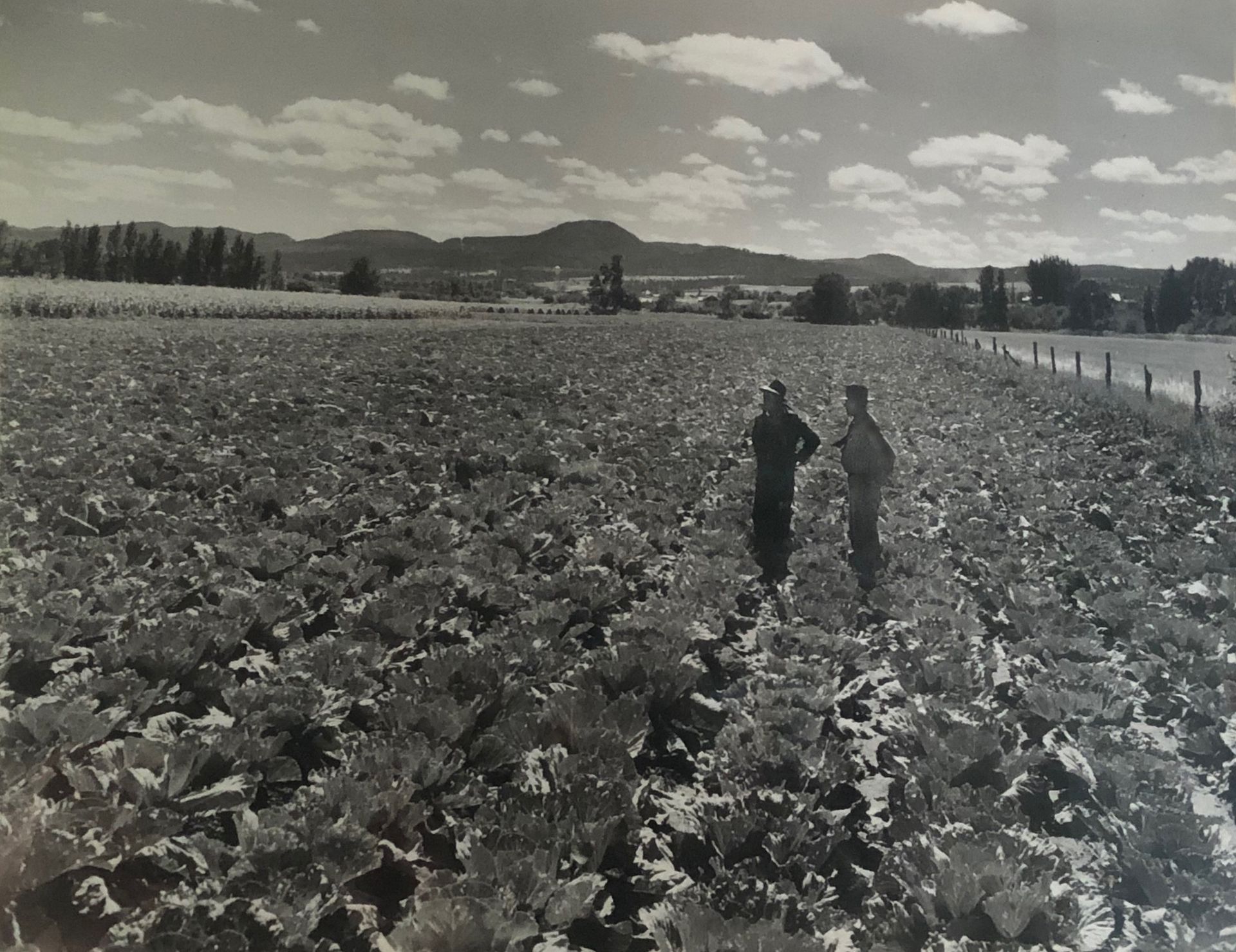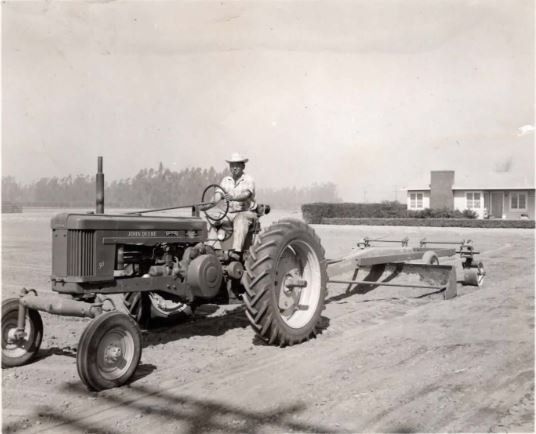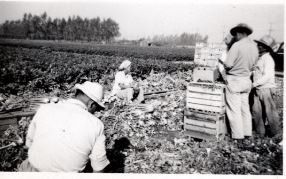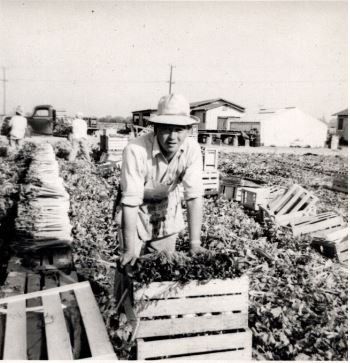Mizusawa Brothers Farm and Mizu Company
Early years
The farms of the Arikawa, Mizusawa and Takahashi families were run much like a coop with the core being the Kitasaki sisters (Chieko, Tomoko and Tomiko), spouses of Seigo Arikawa, Fred Minoru Mizusawa and Ko Takahashi. The Farms were located in Santa Ana near Newhope and First Street, Garden Grove near Westminster and Harbor Blvd and Fountain Valley near Newhope and Warner Ave.
Frank Mizusawa was founder of Mizu Company which was located at 11905 E. Westminster in Garden Grove on essentially the same property as the Mizusawa Farm at 11911 E. Westminster Blvd.
First products were made for the Mizusawa Brothers’ farm and nursery. The Mizusawa farm was purchased in late 1940’s after the brothers returned from incarceration at detention camps for U.S. citizens of Japanese ancestry. Fred and Tomoko Mizusawa were married in camp in 1943 and went to Denver before the camps closed down.
Early crops on the farm included Cauliflower, Celery, Bell Peppers. The main crop grown during the summer was tomatoes. The Arikawas grew flowers on the farm in later years and the Takahashis grew Strawberries and Olallieberries.
Two homes, a packing shed and the Mizu Company factory were built on the property by Frank and Fred Mizusawa with help - most likely the other close relatives and friends. It also included a large glass green house taken care of by Mie (Moe) Mizusawa and the three Kitasaki sisters, which was used to grow seedlings of tomatoes for transplanting to farms in the area.
One of the first products of Mizu company was a mechanized tomato sorter which sized the tomatoes before packing. This sorter used a series of belts with holes of different sizes which the tomatoes traveled along. The smallest tomatoes fell into the first bin as that belt had the smallest holes. When packed in wooden lug boxes the tomatoes had varying sizes from 7x8 up to 4x4. 7 by 8 tomatoes were about 1 and ½ to 2 inches in size. 4 by 4 tomatoes were about 5 or 6 inches in diameter. One of the kids’ duties when we were elementary and junior high school age was to put labels (Mizusawa Brothers) on the wooden boxes before they were packed with tomatoes. We were paid one cent per label and was one of our first sources of spending money. After the boxes were packed, we nailed slats on the top of the boxes which prevented stacked boxes from falling into boxes below. These boxes were picked up every evening and taken to the vegetable markets in Los Angeles. One of the problems with the first tomato sorter was that once in awhile a tomato would get stuck in the hole in the belt and get crushed. When the belt reached a roller which the belt traveled around. When that happened the machine had to be stopped and a clean up was done to keep other tomatoes from getting tomato juice all over them.
A new sorter was developed by Frank which used a rotating series of slats that got further apart as they progresses along the length of the sorter. This stopped the occasional crushed tomato.
Early on small farm items were developed which helped with harvesting various crops. Special knives were created for harvesting cauliflower and celery. Special carts were created so tomato pickers could push several boxes for putting tomatoes in. The kids had fun turning these into toys like attaching sails to them when the Santa Ana winds blew. We had little land sailing carts. I think those carts were popular with other farmers as I can remember. We made quite a few of them, many more then we needed for our farm.
One non-farm invention that my Uncle made for us was a gas powered go-kart. To me ( 80 pound weakling in those days) it weighed a “ton” and it didn’t go all that fast but it was still fun.
Our farm also had a couple of buildings to house our migrant farm workers. The same workers seemed to come back every year to help with the harvesting of crops. We came to know them and I loved eating their home made tortillas.
We had other workers who helped with tomato picking and packing who had permanently relocated to our area from Mexico. They of course made the best tamales every Christmas.
Work at the Mizu company
Many of the nephews of Uncle Frank and Auntie Moe got their social security numbers and first paychecks due to the Mizu Company. My Social Security report shows my first “reportable” earnings in 1965 when I would have been 15 years old. This would have been when I started working at Mizu Company.
By this time Mizu Company was making a range of products. All of the nephews went through the apprenticeship process. I didn’t work on the many products as I was the clean up crew. I cleaned all the machines after they had been used. Slowly over time I was taught how to use all these machines and hand tools as well. Over time my main machines were the lathe, band saw, drill presses, and hydraulic punch presses. I did less work with the sheet metal bender.
The work crew (varied over time)
Frank and Mie Mizusawa (owners and head engineer and painter)
Clifford and Harry Matsukane (head welder and craftsman)
Steven Mizusawa (Clean up crew and machinist/craftsman)
Ron Mizusawa (Clean up, machinist and painter)
Robert Mizusawa (Clean up, machinist)
Walter Takeda (Machinist and craftsman)
Rik Takeda (Clean up crew and machinist)
Bernardo (Paint preparation and craftsman)
Ko Takahashi (Occasional help, machinist and welder)
What did Mizu Co. make?Don Takahashi/John Nakamine (Occasional help)
Fred Mizusawa on his tractor in front of the home in Garden Grove
Celery harvesting on the Mizusawa brothers farm
Celery harvesting on the Mizusawa brothers farm
Packing celery in the fields
Washing bell peppers before packing
Packing bell peppers
